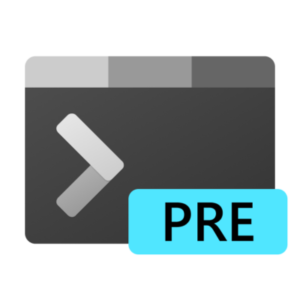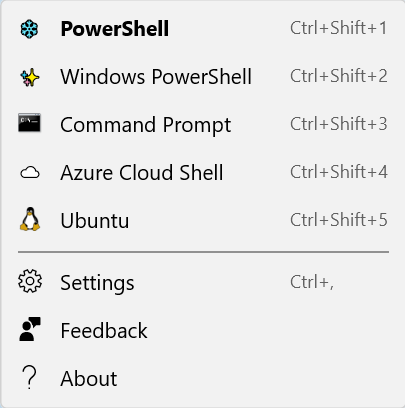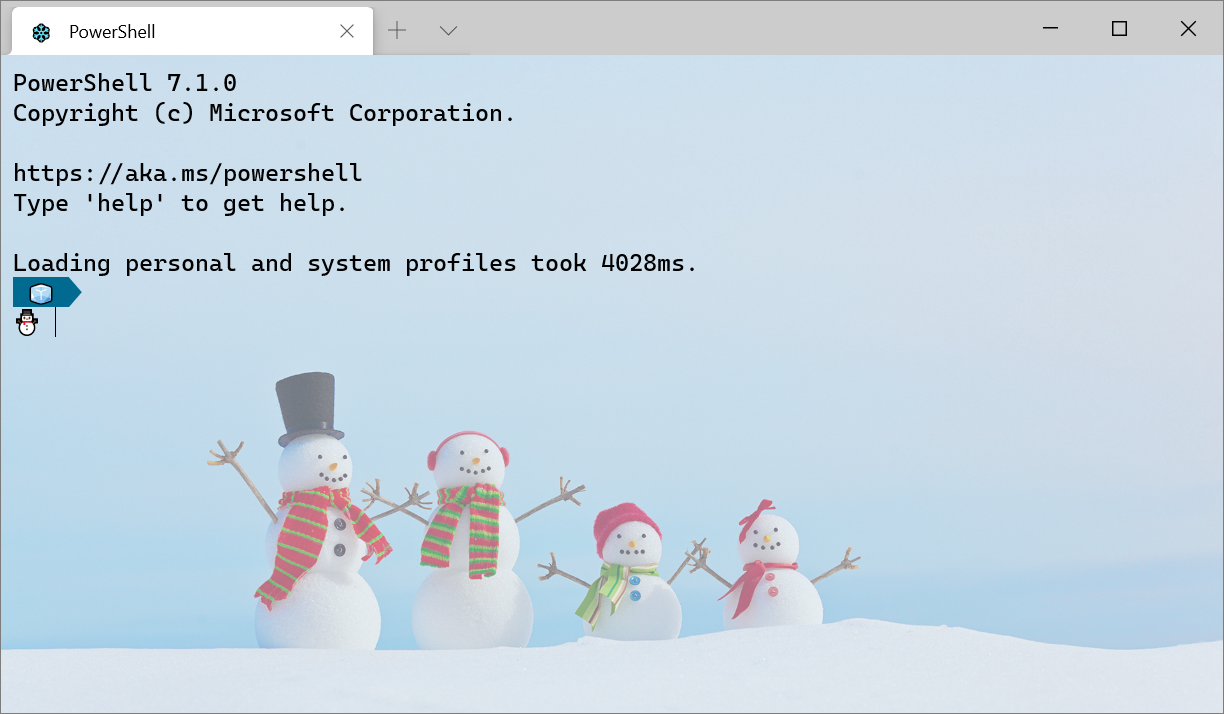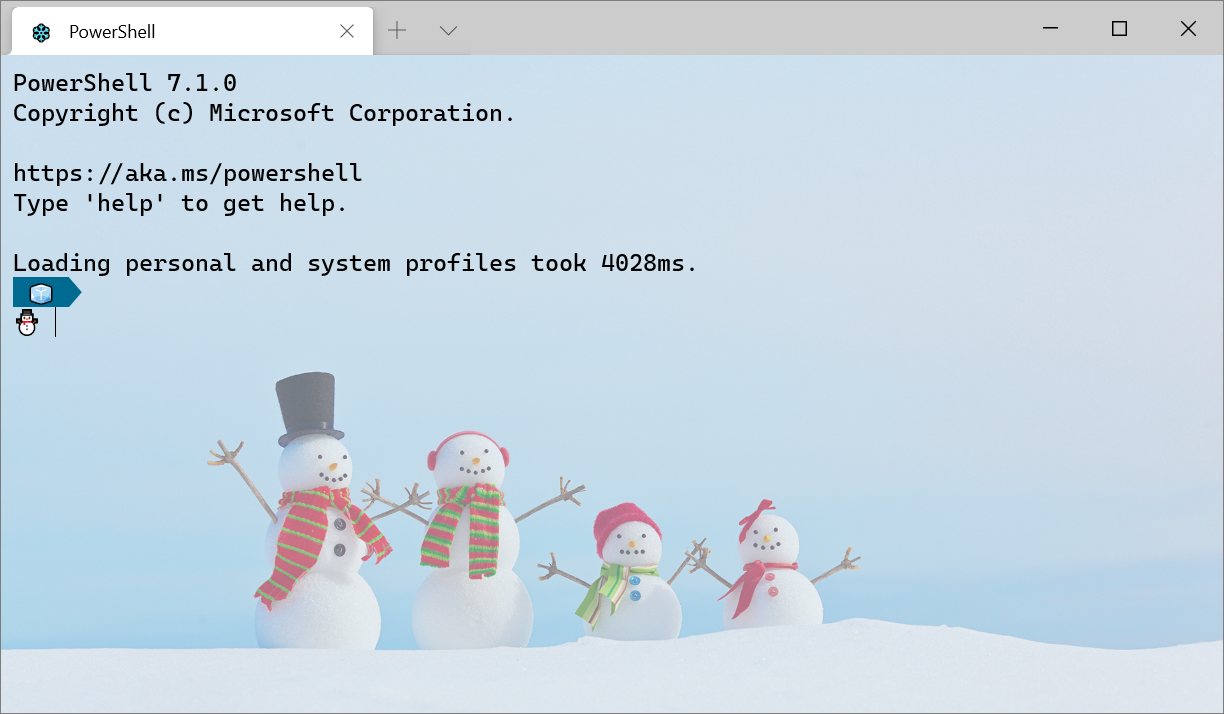How to create file in windows terminal
How To Create Files – From The Command Line (The Easy Way!) – Windows, CMD
Jump Right In:
Navigate to where you want to create your file.
Create A File Using CMD (Empty, Text, Batch).
Creating files with the current date.
Creating a dummy file with a specific size.
Create Files From Different Directories.
What We’ll Learn:
Welcome!
This guide is all about creating new files from the windows command line.
Navigate to where you want to create your file:
Before we begin learning how to create files we must first learn how to change the location of our command line into to the location in which we want to create our new file.
For this example, let’s assume that we want to create our file in our desktop directory.
1) Open a command prompt without administrator privileges
By default, the command prompt is located at a folder within your users directory that’s named after your computers username (C:\Users\MyPC)
2) Use the “Dir” command to view every file and folder in the current directory.
The name of every file and folder as well some information about each of them will immediately appear.
3) Navigate to the directory of your choice using the “CD” command.
“CD” stands for “Change Directory”. Remember to surround the name of the directory you want to navigate into within quotes.
Your current working directory will immediately change.
And that’s it! You should now have navigated into the directory of your choice.
In case you made a mistake you can navigate to the previous directory by typing Cd followed by two dots.
The double dots represent the parent directory.
Now that we are located in the correct directory lets create our file.
Create A File Using CMD (Empty, Text, Batch).
Lets start with learning how to create files from our command line. To do so we will need to use the “Echo” command along with a redirector.
What exactly is echo and a redirector I hear you ask?
This might start to sound complicated, but don’t worry its actually pretty simple.
Do you see where I am going with this?
We can use the echo command to print a string and redirect its output into a new file by using a redirector, specifically the greater than redirector (>).
Lets see what that would look like:
Text Files:
Lets start by creating a new text file.
You should see a new file in your current directory. Pretty simple right?
To view the contents of a file we just created directly from the command line we can use the “Type” command. Simply enter type followed by the name of the file we just created.
The contents of the file will immediately be shown in the command prompt.
Apart from creating a new file we can add or append text to an existing text file. To do so we need to use the greater than symbol twice. Here is what that would look like:
Our file will now contain the following text:
Empty Text Files
In many cases you might want to crate a completely empty text file. The syntax for this command is very similar to our previous command however this time we need to add a dot directly after the echo command.
An empty file will immediately appear in your current directory.
In case you are wondering, the dot tells the echo command to not output anything.
Batch Files
While creating text files is nice, in may case you will want to create batch files. Doing so is very simple, all we have to do is replace the extension of the name of our new file from .txt to .bat.
Here is what that would look like:
And a new batch file will immediately be created in your current directory.
Literally Any type of File:
In a similar way by using the extension of our choice we can create literally any type of file.
You can embed the current date right into the name of the file you are creating by taking advantage of the %Date% automatic variable. Here is what our command would look like:
This command will create a text file with the current date as its name in our current directory.
In my case the file will be named:
You might be wondering what /=- does.
By default, the date in the %Date% variable is stored in this format:
However, to use this as the name of a file we need to replace the backward slashes with any other symbol, so that the command line doesn’t misinterpret our date as a directory.
That is exactly what /=- does, you can replace the dash with any symbol of your choice.
Using the windows command prompt you can create empty, dummy files with a specific size of your choice.
To do so we need to use the FSutil command instead of echo, which is what we have been using thus far.
FSutil stands for file system utility and as the name suggests it can be used to perform various operations on our file system.
But you don’t care about any of that, you just want to create a file.
To do so all you have to do is use the following syntax:
Confused? Lets break it down:
In this case a 10 MB file will be created.
Adjust the number of bytes to create a file with the size you want.
In case you want to convert gigabytes to bytes, use this online converter.
In all the above examples our new files will be created in the current directory.
In case you want to create your new file in a directory other than your current one, you need to enter your target directory just before the name of your new file.
So here is what our echo command would look like:
This command will create an empty file in our documents directory.
To make it work for you replace with your computers username.
And here is what our FSutil command would look like:
This command will create a dummy file with a 10 MB size in our desktop directory.
Once again replace with your computers username.
In all the above examples we created only a single file. The beauty of the command line however is that you can complete complex, time consuming tasks in an instance, such as creating multiple files at once.
To do so, we need to use a for loop. For loops repeat an instruction a certain number of times.
Lets take a look at all the ways we can use a for loop to create multiple files:
Numbered Files (File1, File2, File3):
Lets start with creating numbered files or, files for which only a number changes between their names.
Without further a do, here is what our command would look like:
This command will create ten empty files in our current directory with the following names: File 1.txt, File 2.txt, File 3.txt, and so on…
This command might also look a little complicated, so let’s break it down:
Adjust the above command accordingly to suit your needs.
To create your files in a different directory, add the path of your choice, just before the name of your new files.
If you are unsure, here’s what that would look like:
Replace with your computers username.
Also, if you are planning on running any of these commands from a batch script you need to use two percentage signs instead of one, so that they are interpreted correctly.
Named Files (First, Second, Third):
Creating named files or, multiple files with different, specified names is quite similar.
Here is what that would look like:
The above command will create three files in your current directory with the following names: First.txt, Second.txt, Third.txt.
To make this command work for you, replace the names you want your files to have in the first parenthesis. And if necessary, replace, or adjust the second parenthesis with the command that will create your files the way you require.
The number of files that will be created depends entirely on how many file names you feed into the loop.
Once again to create your files in a different directory, add the target path just before the A parameter in the second parenthesis. Take a look at the above commands if you need a reference.
Finally, if you are planning on running this command from a batch script instead of the command line, you need to use two percentage signs instead of one so that your command is interpreted correctly.
Summary:
That’s It!
You now know how to create many types of files directly from the command prompt.
If you liked this short guide take a look at a few of our other posts related to the windows command line, or if you really liked it consider enrolling in our video course where you will learn the ins and outs of the Windows command Line.
Getting Started with Windows Terminal
December 17th, 2020
Installation
Windows Terminal is available in two different builds: Windows Terminal and Windows Terminal Preview. Both builds are available for download from the Microsoft Store and from the GitHub releases page.
Requirements
In order to run either Windows Terminal build, your machine must be on Windows 10 1903 or later.
Windows Terminal Preview
Windows Terminal Preview is the build where new features arrive first. This build is intended for those who like to see the latest features as soon as they are released. This build has a monthly release cadence with the newest features each month.
Windows Terminal
Windows Terminal is the main build for the product. Features that arrive in Windows Terminal Preview appear in Windows Terminal after a month of being in production. This allows for extensive bug testing and stabilization of new features. This build is intended for those who want to receive features after they have been introduced and tested by the Preview community.
First launch
After installing the terminal, you can launch the app and get started right away with the command line. By default, the terminal includes Windows PowerShell, Command Prompt, and Azure Cloud Shell profiles inside the dropdown. If you have Windows Subsystem for Linux (WSL) distributions installed on your machine, they should also dynamically populate as profiles when you first launch the terminal.
Profiles
Profiles act as different command line environments that you can configure inside the terminal. By default, each profile uses a different command line executable, however you can create as many profiles as you’d like using the same executable. Each profile can have its own customizations to help you differentiate between them and add your own flair to each one.
Default profile
Upon first launch of Windows Terminal, the default profile is set to Windows PowerShell. The default profile is the profile that always opens when you launch the terminal and it is the profile that will open when clicking the new tab button. You can change the default profile by setting «defaultProfile» to the name of your preferred profile in your settings.json file.
Adding a new profile
New profiles can be added dynamically by the terminal or by hand. Windows Terminal will create profiles for PowerShell and WSL distributions automatically. These profiles will have a «source» property that tells the terminal where it can find the proper executable.
👉 Note: You will not be able to copy the «source» property from a dynamically generated profile. The terminal will just ignore this profile. You will have to replace «source» with «commandline» and provide the executable in order to duplicate a dynamically generated profile.
Settings.json structure
There are two settings files included in Windows Terminal. One is defaults.json, which can be opened by holding the Alt key and clicking the Settings button in the dropdown. This is an unchangeable file that includes all of the default settings that come with the terminal. The second file is settings.json, which is where you can apply all of your custom settings. This can be accessed by clicking the Settings button in the dropdown menu.
Further down in the file is the «schemes» array. This is where custom color schemes can be placed. A great tool to help you generate your own color schemes is terminal.sexy.
Lastly, at the bottom of the file, lives the «actions» array. Objects listed here add actions to your terminal, which can be invoked by the keyboard and/or found inside the command palette.
Basic customizations
Here are some basic settings to get you started with customizing your terminal.
Background image
One of our most popular settings is the custom background image. This is a profile setting, so it can either be placed inside the «defaults» object inside the «profiles» object to apply to all profiles or inside a specific profile object.
Color scheme
The list of available color schemes can be found on our docs site. Color schemes are applied at the profile level, so you can place the setting inside «defaults» or in a specific profile object.
This setting accepts the name of the color scheme. You can also create your own color scheme and place it inside the «schemes» list, then set the profile setting to the name of that new scheme to apply it.
Font face
By default, Windows Terminal uses Cascadia Mono as its font face. The font face is a profile level setting. You can change your font face by setting «fontFace» to the name of the font you would like to use.
💡 Tip: Windows Terminal also ships with the Cascadia Code font face, which includes programming ligatures (see gif below). If you are using Powerline, Cascadia Code also comes in a PL version which can be downloaded from GitHub.
Great resources
Cheers
We hope this post helped you get set up with Windows Terminal! If you have any questions, feel free to reach out to Kayla (@cinnamon_msft) on Twitter. If you have any feature requests or find any bugs, you can file an issue on GitHub. Our next release is planned for January, so we will see you then!
Kayla Cinnamon
Program Manager, Windows Terminal, Console, Command Line, & Cascadia Code
Quick Tip: Lightning Fast File Creation with Terminal
Wouldn’t it be great if you could quickly create any type of file in OS X and place it in any directory? With a few quick Terminal commands, you can! Read on to see what they are.
But Terminal Scares Me!
I know, Terminal is a scary place. If you don’t know what you’re doing, you can seriously screw with your system in a bad way. Don’t worry though, we’re here to help you through it.
Even if you’ve never opened Terminal, you’ll be able to pull this one off.
Today’s Quick Tip is perfect for anyone with any level of Terminal experience. Even if you’ve never opened Terminal, you’ll be able to pull this one off, I promise.
Three Steps to File Creation Bliss
Being able to create new files on the fly via the keyboard is pretty much guaranteed to make you feel like some sort of Mac wizard.
Before you start calling yourself Gandalf though, there are three commands that you must understand. Each of these will play into our final file creation snippet.
Step 1. Change the Directory
Before we learn how to create new files, we have to learn how to make sure they go into the right spot. By default, when you open up Terminal, it should be pointing to your home folder.
Just to be sure of your surroundings, type in the «ls» and hit enter to see the contents of the currently active directory. This will spit out a list of files and folders that is a direct representation of what’s in your home folder if you bring it up in Finder.
This concept is key. Navigating directories in the Terminal is just like navigating in the Finder, you’re just using text instead of a GUI.
For today’s example, we’ll want to use the Desktop folder. To do this, we need to «change directories» with «cd», like so:
Step 2. Create a Folder
Once you’re on the Desktop, it’s time to make a folder. This is accomplished via the «mkdir» command.
The command above should yield a folder on your Desktop titled «webproject». Change the name to anything you like and watch the folder pop up instantly on your Desktop.
Step 3. Create Files with Touch
Creating a file with Terminal is super easy. All you have to do is type «touch» followed by the name of the file that you wish to create.
This will create an «index.html» file in your currently active directory.
Putting it All Together
Now that we know how all three steps work, now let’s put them into practice into one long command that will do everything that we need to. Note that you can type multiple commands on a single line if you separate them with a semicolon.
Let’s break this down to see what we’ve accomplished:
Tip: You can easily create multiple files with a single touch command, just separate the file names with a space: touch index.html style.css
Cheat with TextExpander
If you’re thinking that this is an awful lot to remember and type each time you want to create a file, you’re right. Until you’re really comfortable with the Terminal, this can be a bulky and awkward process. However, with TextExpander or any other text expansion app, you can pull it off with just a few keystrokes.
All you have to do is toss the line of code above exactly as it appears into a macro and then choose something short and sweet to expand it (I use «web#» for this particular example.)
If you really want to get fancy, you can use fill in values to turn this into a customizable macro that can be different each time you run it. To do this, enter the following snippet into the «Content» portion of your macro.
As you can see, we used the same variable (folder) for the first two fields. This means that you only have to type this in once and it will automatically sync in both locations. If you activate this macro with TextExpander, you’ll get a nice little form to fill out.
Go Try It!
Now that you’ve seen how to create files in Terminal, it’s time for you to give it a shot. Try out a few examples and let us know what you think in the comments below.
Начало работы с Windows Terminal
Привет, Хабр! Сегодня делимся гайдом по началу работы с Windows Terminal. Да, поскольку он о начале работы с инструментом, в основном в материале описываются какие-то базовые моменты. Но я думаю, что и профессионалы смогут подчерпнуть для себя что-то полезное, как минимум из списка полезных ссылок в конце статьи. Заглядывайте под кат!
Установка
Windows Terminal доступен в двух разных сборках: Windows Terminal и Windows Terminal Preview. Обе сборки доступны для загрузки в Microsoft Store и на странице выпусков GitHub.
Требования
Для запуска любой сборки Windows Terminal на вашем компьютере должна быть установлена Windows 10 1903 или более поздняя версия.
Windows Terminal Preview
Windows Terminal
Терминал Windows — это основная сборка продукта. Функции, которые поступают в Windows Terminal Preview, появляются в Windows Terminal через месяц эксплуатации. Это позволяет проводить обширное тестирование ошибок и стабилизацию новых функций. Эта сборка предназначена для тех, кто хочет получить функции после того, как они были изучены и протестированы сообществом Preview.
Первый запуск
После установки терминала вы можете запустить приложение и сразу приступить к работе с командной строкой. По умолчанию терминал включает профили Windows PowerShell, Command Prompt и Azure Cloud Shell в раскрывающемся списке. Если на вашем компьютере установлены дистрибутивы Подсистемы Windows для Linux (WSL), они также должны динамически заполняться как профили при первом запуске терминала.
Профили
Профили действуют как различные среды командной строки, которые вы можете настраивать внутри терминала. По умолчанию в каждом профиле используется отдельный исполняемый файл командной строки, однако вы можете создать столько профилей, сколько захотите, используя один и тот же исполняемый файл. Каждый профиль может иметь свои собственные настройки, которые помогут вам различать их и добавить в каждый свой собственный стиль.
Дефолтный профиль
При первом запуске Windows Terminal в качестве профиля по умолчанию устанавливается Windows PowerShell. Профиль по умолчанию — это профиль, который всегда открывается при запуске терминала, и это профиль, который открывается при нажатии кнопки новой вкладки. Вы можете изменить профиль по умолчанию, установив «defaultProfile» на имя вашего предпочтительного профиля в файле settings.json.
Добавление нового профиля
Новые профили можно добавлять динамически с помощью терминала или вручную. Терминал Windows автоматически создаст профили для распределений PowerShell и WSL. Эти профили будут иметь свойство «source», которое сообщает терминалу, где он может найти соответствующий исполняемый файл.
Если вы хотите создать новый профиль вручную, вам просто нужно сгенерировать новый «guid», указать «name» и предоставить исполняемый файл для свойства «commandline».
Примечание. Вы не сможете скопировать свойство «source» из динамически созданного профиля. Терминал просто проигнорирует этот профиль. Вам нужно будет заменить «source» на «commandline» и предоставить исполняемый файл, чтобы дублировать динамически созданный профиль.
Структура Settings.json
В Терминал Windows включены два файла настроек. Один из них — defaults.json, который можно открыть, удерживая клавишу Alt и нажав кнопку «Настройки» в раскрывающемся списке. Это неизменяемый файл, который включает в себя все настройки по умолчанию, которые поставляются с терминалом. Второй файл — settings.json, в котором вы можете применить все свои пользовательские настройки. Доступ к нему можно получить, нажав кнопку «Настройки» в раскрывающемся меню.
Файл settings.json разделен на четыре основных раздела. Первый — это объект глобальных настроек, который находится в верхней части файла JSON внутри первого <. Примененные здесь настройки повлияют на все приложение.
Следующим основным разделом файла является объект «profiles». Объект «profiles» разделен на два раздела: «defaults» и «list». Вы можете применить настройки профиля к объекту «defaults», и они будут применяться ко всем профилям в вашем «list». «list» содержит каждый объект профиля, который представляет профили, описанные выше, и это элементы, которые появляются в раскрывающемся меню вашего терминала. Настройки, примененные к отдельным профилям в «списке», имеют приоритет над настройками, примененными в разделе «defaults».
Далее в файле расположен массив «schemes». Здесь можно разместить собственные цветовые схемы. Отличный инструмент, который поможет вам создать свои собственные цветовые схемы, — это terminal.sexy.
Наконец, в нижней части файла находится массив «actions». Перечисленные здесь объекты добавляют действия в ваш терминал, которые можно вызывать с клавиатуры и/или находить внутри палитры команд.
Базовая кастомизация
Вот несколько основных настроек, которые помогут вам начать настройку вашего терминала.
Одна из самых популярных настроек — настраиваемое фоновое изображение. Это настройка профиля, поэтому ее можно либо поместить внутри объекта «defaults» внутри объекта «profiles», чтобы применить ко всем профилям, либо внутри определенного объекта профиля.
Цветовая схема
Список доступных цветовых схем можно найти на нашем сайте документации. Цветовые схемы применяются на уровне профиля, поэтому вы можете поместить настройку внутри «значений по умолчанию» или в конкретный объект профиля.
Этот параметр принимает название цветовой схемы. Вы также можете создать свою собственную цветовую схему и поместить ее в список «schemes», а затем установить в настройках профиля имя этой новой схемы, чтобы применить ее.
Начертание шрифта
По умолчанию Windows Terminal использует Cascadia Mono в качестве шрифта. Начертание шрифта — это настройка уровня профиля. Вы можете изменить шрифт, установив «fontFace» на имя шрифта, который вы хотите использовать.
Совет: Терминал Windows также поставляется с начертанием шрифта Cascadia Code, который включает программные лигатуры (см. Gif ниже). Если вы используете Powerline, Cascadia Code также поставляется в PL-версии, которую можно загрузить с GitHub.














